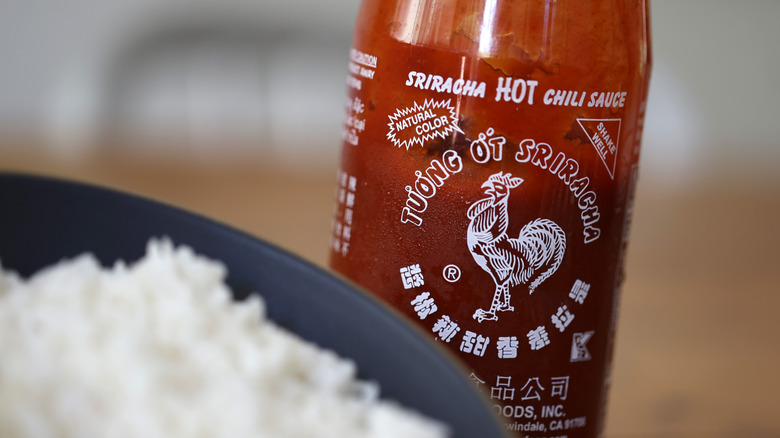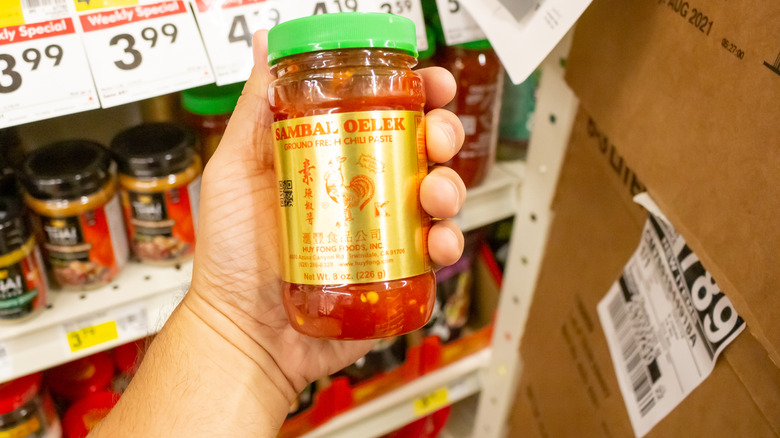The Ingredient Difference Between Sriracha And Sambal Oelek
Fans of spicy foods may be familiar with sriracha — one of the most popular brands seen in U.S. groceries and restaurants, Huy Fong Foods, has an eye-catching green top and a rooster on the bottle. However, people often confuse the tangy sauce with its rather more bold counterpart, sambal oelek. First, there's the matter of origins. Sriracha is a condiment with Thai origins while sambal oelek is a product from Indonesia. When it comes to ingredients, the list starts off similar, as both sauces feature chili peppers, salt, and vinegar.
But the real differences between the two come down to other ingredients that get involved. In sriracha, sugar and garlic powder, along with the jalapeño red chilies, are essential to the recipe. The Huy Fong brand also includes potassium sorbate and sodium bisulfite (both preservatives) and xanthan gum as a thickener. Sambal oelek, a simple combination of spices and chilis, may also contain lemon, onion, and oil, but no sweetener.
How to use sambal oelek and sriracha
If you get your hands on either or both of these sauces, what should you do with it? Sambal oelek is a multi-purpose chili paste that can be used in dipping sauces, stir-fries, marinades, and even mixed into or dabbed atop eggs. This thick sauce dappled with chili seeds is also a great condiment for grilled or fried chicken, beef ribs, tofu, and tempeh. Try it in rice dishes or add it to soups. Sambal oelek is among the unexpected ingredients used by Martha Stewart, who mixes it into her spicy, sweet chili sauce and serves it with shrimp or sautéed beef fillets.
Sriracha — the more mild in flavor of the two — can be used to spice up homemade Thai peanut sauce or as a topping on your favorite squash soup. Add a dash to your pizza sauce or use it with popcorn seasonings for a gentle hit of spice. If you dare, you can even wake up your plain old peanut butter and jelly sandwich with a layer of sriracha sauce.

